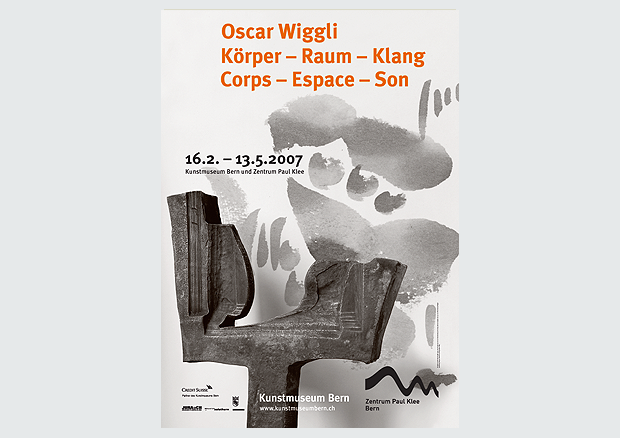Body - Space - Sound. A creative output overview in the Kunstmuseum Bern and the Zentrum Paul Klee
Iron sculptures, music, drawings, photography, film: Sensuality in all genres
Oscar Wiggli is one of the leading Swiss artists of his generation. In almost sixty years of work, the artist has created an oeuvre of enormous technical and formal breadth that comprises subtle metal constructions as well as monolithic, monumental sculptures. Not only a sculptor, he is also one of the great graphic artists and photographers of the 20th century. He explores space and volume with acoustic strategies. He mixes sounds, tones and sound systems on computer to create virtual sounding entities which have attracted great attention in the avant-garde scene. This overview of works is the first joint exhibition put on by the Kunstmuseum Bern and the Zentrum Paul Klee.
Oscar Wiggli’s contribution to iron sculpture, begun in the 1950s, is of international importance. Oscar Wiggli himself has said «All my sculptures are women». The feminine forms in his sculptures are not difficult to recognize. The corporeality and sensuality are still characteristic of Wiggli’s forged works today. It is not only as a sculptor in metal that Oscar Wiggli has made himself a name: the exhibition title Body – Space – Sound is indicative of the diversity of Oscar Wiggli’s artistic activity as sculptor, draughtsman, graphic artist, photographer and composer of electro-acoustic music.
Oscar Wiggli researches analogies between the genres that are mutually fertile. For instance, he draws sound pictures, the so-called Sound-Lavis. His musical scores are collages from details of pictures of his sculptures or fragments of his drawings and photographs. In a figurative sense, Wiggli makes his sculptures ring. In his electro-acoustic compositions he mixes sounds that arise during forging and other sounds to make virtual bodies of sound. Even his early works were characterized by a fundamental musical feeling: vibrant metal sculptures and photographs of landscapes full of life, «dancing» metal figures, drawings of tall, slim forms and wavy, vibrating bodies are proof of a formal musical principle. Or to put it another way: Wiggli forges tones, draws sounds and uses the sound of hammer blows in his compositions. In the last twenty years he has managed to combine his work into a synthesis of art under the sign of musical composition.
On the occasion of Oscar Wiggli’s 80th birthday, the Kunstmuseum Bern and the Zentrum Paul Klee are presenting a comprehensive overview of all areas of the artist’s creativity. While the Kunstmuseum Bern will be showing Wiggli’s sculptures in small and medium format, the large and medium format steel sculptures will be on show in the Zentrum Paul Klee in the Sculpture Park Martha Müller and the Museumsstrasse area. These were made between 1987 and 1994 in the Von Roll Works in Gerlafingen using industrial presses and hydraulic forging hammers.


